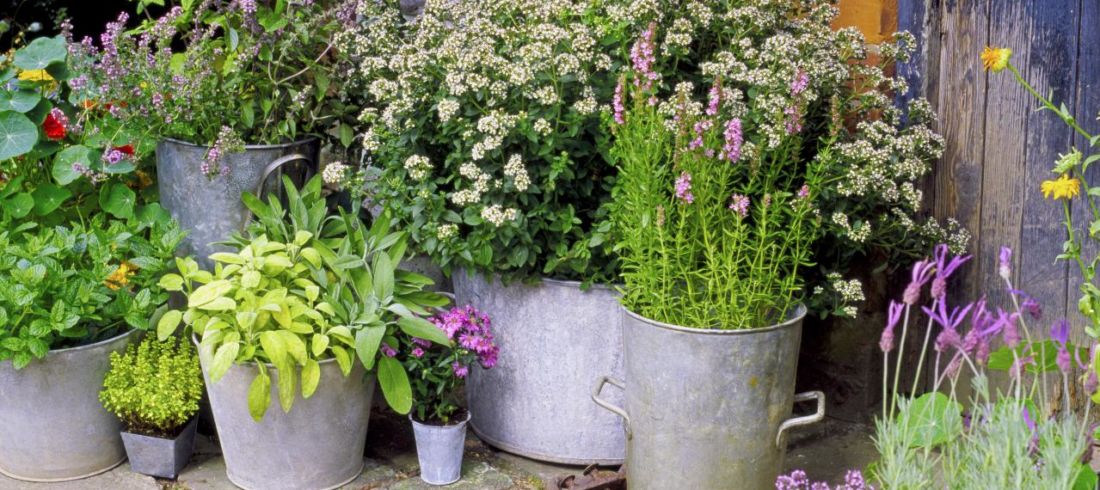Your green thumb is itching to plant, but you have no real space for a garden. How about simply filling an interesting container with a colorful mix of plants and setting it on your front stoop? Get a pot, a flower box, or even an old tin can, fill it with seeds or a few transplants, and you’re off. With a collection of pots, buckets, and baskets, the unlikeliest of spaces can become a garden. Although clay pots remain the staple, there’s a world of other containers to suit any need, style, or budget.
Fiberglass lasts indefinitely and can be made to look like stone, concrete, or metal. Wood breathes well. And why not consider flea market or garage sale finds, rustic barrels, or old buckets? I’ve even seen old boots displayed with plants pouring out of them. Some people prefer rubber tires or wine barrels to establish their container garden. Picture a few well-placed containers on the front steps, rooftop, balcony, deck, or porch—it brings the garden right to your door. If you are using a basket, it is a good idea to line your container with sphagnum moss that has been soaked in a bucket of water overnight. Make sure any container you select has good holes for drainage and a plastic or metal pan underneath to catch runoff water.

The potting mix you choose will contribute vitally to the success of your container plants. Use a high-quality potting mix that contains peat moss and a controlled-release organic fertilizer. Garden soil does not work well in containers because watering packs it down and reduces available oxygen, bringing on root rot.
In selecting plants, decide what colors you like best. Choose both upright and trailing plants so that some will spill over the edges. Make sure the ultimate height of the plants will be in scale with the pot. As you assemble the plants you have selected for your pot, arrange them so the tallest are in the center. It helps to mound the dirt in the middle of the pot and plant the tallest plants there for maximum viewing, and then surround them with the low growers. Perhaps a nice ornamental grass will do well in the center, or Russian sage or lavender. I like to put trailing plants like bacopa, nasturtiums, or lobelia around the edges for a draping effect.
Many vegetables can be grown in containers as well. Salad greens and herbs are perfect in pots; cherry tomatoes and squash are good ones to try, too.
Because of our hot, dry summers, plants grown in containers require ongoing care. Provide them regularly with food and water. For the first two weeks keep your container out of direct sunlight. Remove tattered leaves and spent blooms. Cut back plants that get too leggy—new growth will fill in soon. Once the plants are established, set them in a sunny location. Soil tends to dry out and will require daily watering during hot spells. If you find your container is dry, quickly dunk the whole pot into a tub of water for several minutes until the bubbling stops. You will also need to fertilize (liquid fertilizers work great for this) frequently, as nutrients leach out of the soil with each watering.
No matter the containers you select—whether classic clay pots or funky tin cans—container gardening will add freshness and pops of color to your outdoor spaces.


